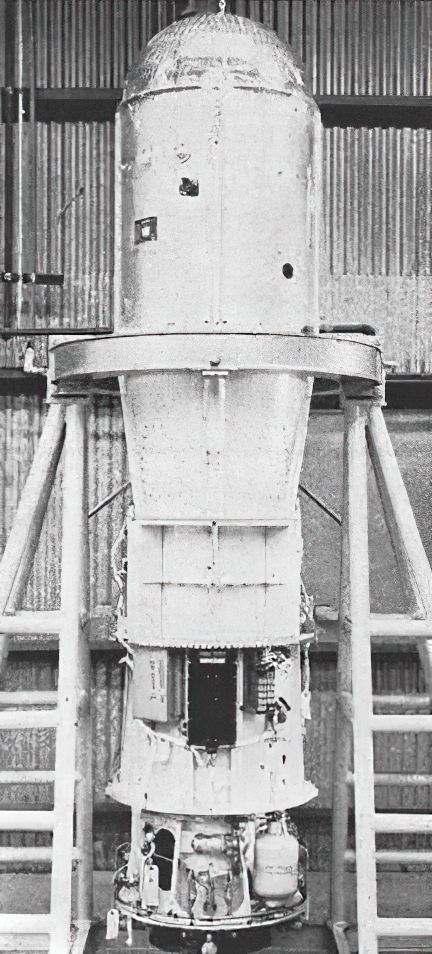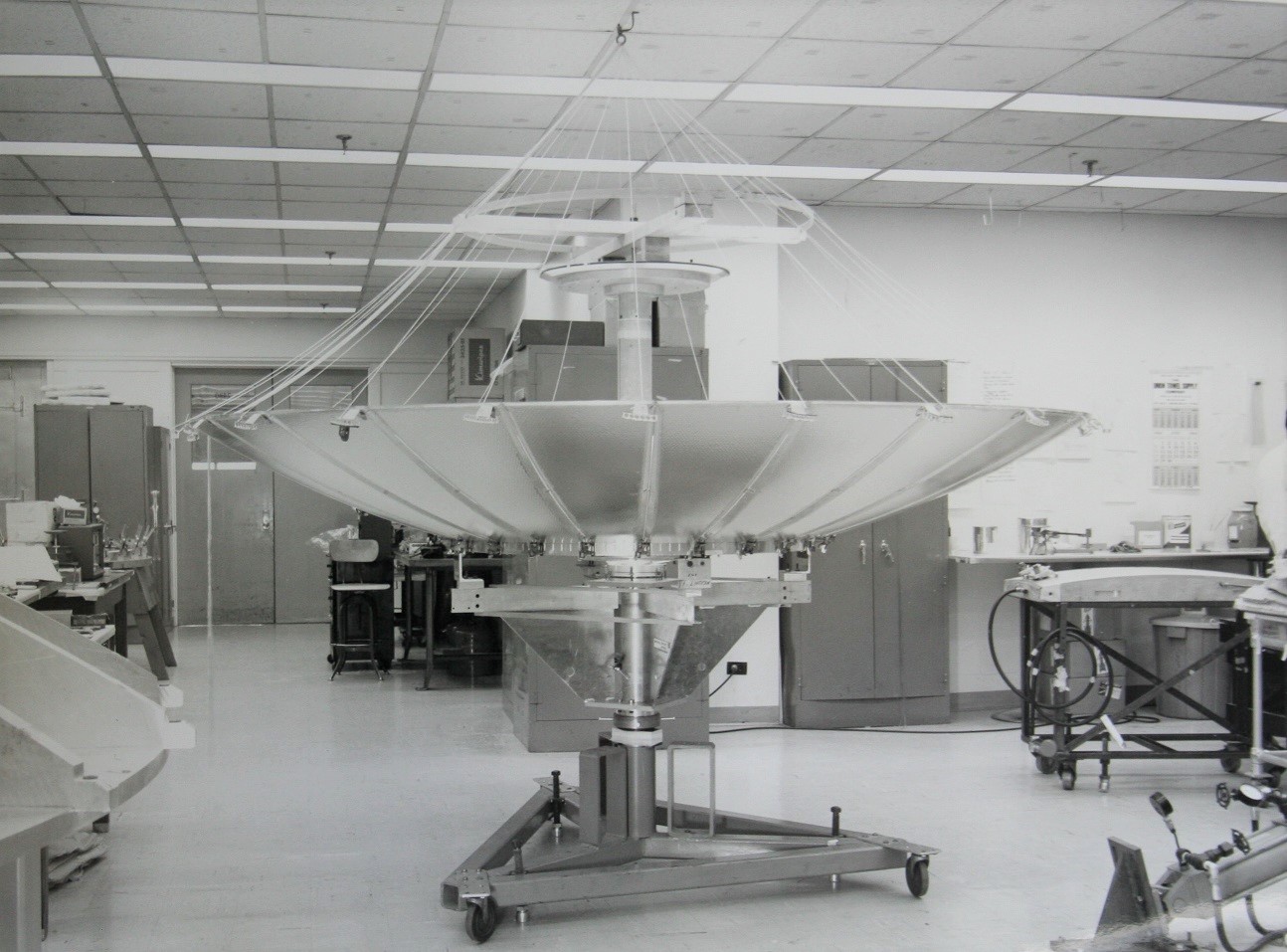|
OV4-1T
Orbiting Vehicle or OV, originally designated SATAR (SATellite - Atmospheric Research), comprised five disparate series of standardized American satellites operated by the US Air Force, launched between 1965 and 1971. Forty seven satellites were built, of which forty three were launched and thirty seven reached orbit. With the exception of the OV3 series and OV4-3, they were launched as secondary payloads, using excess space on other missions. This resulted in extremely low launch costs and short proposal-to-orbit times. Typically, OV satellites carried scientific and/or technological experiments, 184 being successfully orbited through the lifespan of the program. The first OV series, designated OV1, was built by General Dynamics and carried on suborbital Atlas missile tests; the satellites subsequently placed themselves into orbit by means of an Altair-2 kick motor. The Northrop-built OV2 satellites were built using parts left over following the cancellation of the Adv ... [...More Info...] [...Related Items...] OR: [Wikipedia] [Google] [Baidu] |
OV1-6
Orbiting Vehicle 1-6 (also known as OV1-6 and OV1-6S) was launched via Titan IIIC rocket into orbit 2 November 1966 along with two other satellites in the United States Air Force's Orbiting Vehicle series on the first and only Manned Orbiting Laboratory test flight. The eighth satellite in the OV1 series to be launched, OV1-6 was designed to release a number of inflatable spheres, which would then be used in classified tracking experiments conducted on the ground. It is uncertain whether or not the satellite successfully released any of its spheres. OV1-6 reentered the Earth's atmosphere on 31 December 1966. History The Orbiting Vehicle satellite program arose from a US Air Force initiative, begun in the early 1960s, to reduce the expense of space research. Through this initiative, satellites would be standardized to improve reliability and cost-efficiency, and where possible, they would fly on test vehicles or be piggybacked with other satellites. In 1961, the Air Force Offic ... [...More Info...] [...Related Items...] OR: [Wikipedia] [Google] [Baidu] |
Environmental Research Satellite
The Environmental Research Satellite (ERS, alternatively Earth Resources Satellite) program was a series of small satellites initially operated by the United States Air Force Office of Aerospace Research. Designed to be launched "piggyback" to other satellites during launch, detaching once in orbit, they were the smallest satellites launched to date—what would today be classified as microsatellites. 33 ERS satellites in six different series were launched between 1962 and 1971, conducting scientific research and serving as test beds to investigate the reliability of new spacecraft components. Summary of launches TRS Mk. 1 The TRS (Tetrahedral Research Satellite) Mk. 1 was developed by Space Technology Laboratories, a subdivision of TRW Inc., as an inexpensive, miniaturized "off-the-shelf" satellite that customers could use to perform simple experiments in orbit. The Mk. 1 was a regular tetrahedron measuring on a side, each face mounted with sufficient solar cells to oper ... [...More Info...] [...Related Items...] OR: [Wikipedia] [Google] [Baidu] |
Altair 2
The Constellation Program was NASA's planned future human spaceflight program between 2005 and 2009, which aimed to develop a new crewed spacecraft ( Orion) and a pair of launchers (Ares I and Ares V) to continue servicing the International Space Station and return to the Moon. As of 2009, a single uncrewed suborbital launch test (Ares I-X) had been flown, with crewed missions anticipated to begin between 2014 (when an uncrewed mission was indeed launched) and 2017-2019 (according to the independent Augustine Commission). On February 1, 2010, President Obama announced that he intended to cancel the program with the U.S. 2011 fiscal year budget. A revised proposal in April confirmed that the Orion spacecraft would be retained for future missions beyond low Earth orbit, with the Ares launchers redeveloped into the Space Launch System. However, the Constellation Program itself was cancelled, with low Earth orbit operations transferred to the Commercial Crew Development program, whi ... [...More Info...] [...Related Items...] OR: [Wikipedia] [Google] [Baidu] |
OV1-1
Orbiting Vehicle 1-1 (COSPAR ID: 1965-F01, also known as OV1-1), was the first satellite in the OV1 series of the United States Air Force's Orbiting Vehicle program. OV1-1 was an American Earth science research satellite designed to measure radiation, micrometeoroid density, and magnetic fields in orbit. Launched 21 January 1965, the mission resulted in failure when, after a successful launch of its Atlas booster, OV1-1's onboard Altair motor failed to fire. History The Orbiting Vehicle satellite program arose from a US Air Force initiative, begun in the early 1960s, to reduce the expense of space research. Through this initiative, satellites would be standardized to improve reliability and cost-efficiency, and where possible, they would fly on test vehicles or be piggybacked with other satellites. In 1961, the Air Force Office of Aerospace Research (OAR) created the Aerospace Research Support Program (ARSP) to request satellite research proposals and choose mission experime ... [...More Info...] [...Related Items...] OR: [Wikipedia] [Google] [Baidu] |
OV1-7
Orbiting Vehicle 1-7 (also known as OV1-7), launched 14 July 1966, was the sixth satellite launched in the OV1 series of the United States Air Force's Orbiting Vehicle program. OV1-7 was a sky science satellite, designed to return data on charged particles in orbit as well as measurements of solar X-rays and nightglow. Co-launched with OV1-8, the satellite was lost when it failed to detach from its launch rocket. History The Orbiting Vehicle satellite program arose from a US Air Force initiative, begun in the early 1960s, to reduce the expense of space research. Through this initiative, satellites would be standardized to improve reliability and cost-efficiency, and where possible, they would fly on test vehicles or be piggybacked with other satellites. In 1961, the Air Force Office of Aerospace Research (OAR) created the Aerospace Research Support Program (ARSP) to request satellite research proposals and choose mission experiments. The USAF Space and Missiles Organization c ... [...More Info...] [...Related Items...] OR: [Wikipedia] [Google] [Baidu] |
Watt
The watt (symbol: W) is the unit of power or radiant flux in the International System of Units (SI), equal to 1 joule per second or 1 kg⋅m2⋅s−3. It is used to quantify the rate of energy transfer. The watt is named after James Watt (1736–1819), an 18th-century Scottish inventor, mechanical engineer, and chemist who improved the Newcomen engine with his own steam engine in 1776. Watt's invention was fundamental for the Industrial Revolution. Overview When an object's velocity is held constant at one metre per second against a constant opposing force of one newton, the rate at which work is done is one watt. : \mathrm In terms of electromagnetism, one watt is the rate at which electrical work is performed when a current of one ampere (A) flows across an electrical potential difference of one volt (V), meaning the watt is equivalent to the volt-ampere (the latter unit, however, is used for a different quantity from the real power of an electrical circuit). : ... [...More Info...] [...Related Items...] OR: [Wikipedia] [Google] [Baidu] |
Western Range (USSF)
The Western Range (WR) is the space launch range that supports the major launch head at Vandenberg Space Force Base. Managed by the Space Launch Delta 30, the WR extends from the West Coast of the United States to 90° East longitude in the Indian Ocean where it meets the Eastern Range Operations involve military, government, and commercial interests. The WR has been operated by civilian contractors since its establishment, following the precedent of the Eastern Range. On 1 October 2003, InDyne Inc. took over the range contract from ITT Industries which had operated the range for the previous 44 years. History Navy's Pacific Missile Range (PMR) The Navy established the Naval Missile Facility at Point Arguello (NMFPA) after the transfer from the Army of 19,800 acres from the southern portion of Camp Cooke in May 1958. Camp Cooke was a World War II training and POW facility and a maximum security Disciplinary Barracks site. Cooke Air Force Base, later Vandenberg Space Fo ... [...More Info...] [...Related Items...] OR: [Wikipedia] [Google] [Baidu] |
Eastern Range
The Eastern Range (ER) is an American rocket range (Spaceport) that supports missile and rocket launches from the two major launch heads located at Cape Canaveral Space Force Station and the Kennedy Space Center (KSC), Florida. The range has also supported Ariane launches from the Guiana Space Centre as well as launches from the Wallops Flight Facility and other lead ranges. The range also uses instrumentation operated by NASA at Wallops and KSC. The range can support launches between 37° and 114° azimuth. The headquarters of the range is now the 45th Space Wing at Patrick Space Force Base. History The history of the Eastern Range began on 18 October 1940, with the activation of the Banana River Naval Air Station which supported antisubmarine sea-patrol planes during World War II. The station was deactivated and put into a caretaker status on 1 September 1947. Launches of captured German V-2 rockets had been ongoing since the end of World War II at White Sands Pr ... [...More Info...] [...Related Items...] OR: [Wikipedia] [Google] [Baidu] |
Ov1-1
Orbiting Vehicle 1-1 (COSPAR ID: 1965-F01, also known as OV1-1), was the first satellite in the OV1 series of the United States Air Force's Orbiting Vehicle program. OV1-1 was an American Earth science research satellite designed to measure radiation, micrometeoroid density, and magnetic fields in orbit. Launched 21 January 1965, the mission resulted in failure when, after a successful launch of its Atlas booster, OV1-1's onboard Altair motor failed to fire. History The Orbiting Vehicle satellite program arose from a US Air Force initiative, begun in the early 1960s, to reduce the expense of space research. Through this initiative, satellites would be standardized to improve reliability and cost-efficiency, and where possible, they would fly on test vehicles or be piggybacked with other satellites. In 1961, the Air Force Office of Aerospace Research (OAR) created the Aerospace Research Support Program (ARSP) to request satellite research proposals and choose mission experime ... [...More Info...] [...Related Items...] OR: [Wikipedia] [Google] [Baidu] |
TRW Inc
TRW Inc., was an American corporation involved in a variety of businesses, mainly aerospace, electronics, automotive, and credit reporting.http://www.fundinguniverse.com/company-histories/TRW-Inc-Company-History.html TRW Inc. It was a pioneer in multiple fields including electronic components, integrated circuits, computers, software and systems engineering. TRW built many spacecraft, including Pioneer 1, Pioneer 10, and several space-based observatories. It was #57 on the 1986 Fortune 500 list, and had 122,258 employees. The company was called Thompson Ramo Wooldridge Inc., after the 1958 merger of the Ramo-Wooldridge Corporation and Thompson Products. This was later shortened to TRW. The company was founded in 1901 and lasted for just over a century until being acquired by Northrop Grumman in 2002. It spawned a variety of corporations, including Pacific Semiconductors, The Aerospace Corporation, Bunker-Ramo and Experian. Its automotive businesses were sold off by Northrop ... [...More Info...] [...Related Items...] OR: [Wikipedia] [Google] [Baidu] |
Martin Marietta
The Martin Marietta Corporation was an American company founded in 1961 through the merger of Glenn L. Martin Company and American-Marietta Corporation. In 1995, it merged with Lockheed Corporation to form Lockheed Martin. History Martin Marietta formed in 1961 by the merger of the Glenn L. Martin Company and American-Marietta Corporation. Martin, based in Baltimore, was primarily an aerospace concern with a recent focus on missiles, namely its Titan program. American-Marietta was headquartered in Chicago and produced paints, dyes, metallurgical products, construction materials, and other goods. In 1982, Martin Marietta was subject to a hostile takeover bid by the Bendix Corporation, headed by William Agee. Bendix bought the majority of Martin Marietta shares and in effect owned the company. However, Martin Marietta's management used the short time separating ownership and control to sell non-core businesses and launch its own hostile takeover of Bendix (known as the Pac-Ma ... [...More Info...] [...Related Items...] OR: [Wikipedia] [Google] [Baidu] |


.jpg)




